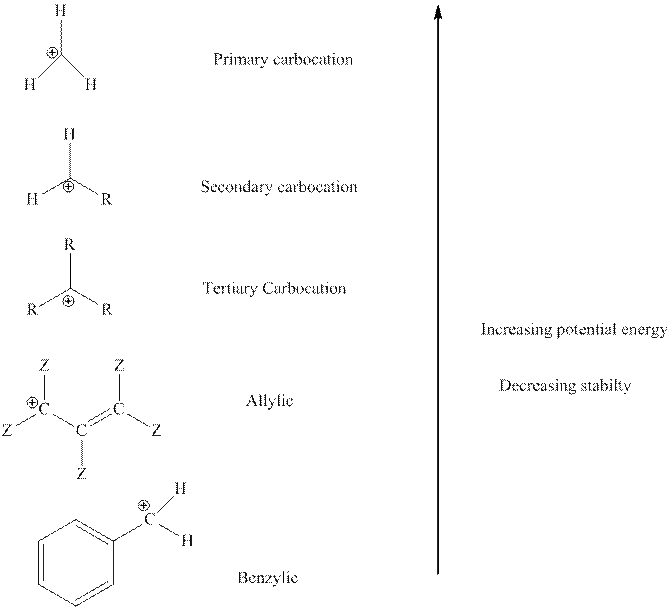
(a)
Interpretation: The mechanism for formation of the alcohol product should be drawn.
Concept introduction:
The product formed is governed by Markovnikov’s Rule. Rule suggests that negative part of halo acid HX must go to the carbon that has more alkyl substituents or less
The order of relative stability of various possible carbocation species is as follows:

(b)
Interpretation: The expected product of reaction was carried out in methanol instead of water should be drawn.
Concept introduction: Alkenes are regarded electron-rich and often undergo addition reaction in presence of electrophilic halo acids or nucleophilic sodium cyanide. The intermediate formed in former is tertiary carbocation and finally nucleophilic part of halo acid attacks in a rapid step to give addition product.
The product formed is governed by Markovnikov’s Rule. Rule suggests that negative part of halo acid HX must go to the carbon that has more alkyl substituents or less
The order of relative stability of various possible carbocation species is as follows:

Trending nowThis is a popular solution!

Chapter 8 Solutions
Organic Chemistry: A Guided Inquiry
- Pls help, identify the best reagents to complete the following reaction arrow_forwardParts a-c contains a synthetic trap that prevents the given rxn from occurring. Draw the product that is actually produced then give an explanation as to why the given reaction will not work.arrow_forwarddraw the remaining product of the reactionarrow_forward
 Organic Chemistry: A Guided InquiryChemistryISBN:9780618974122Author:Andrei StraumanisPublisher:Cengage Learning
Organic Chemistry: A Guided InquiryChemistryISBN:9780618974122Author:Andrei StraumanisPublisher:Cengage Learning
